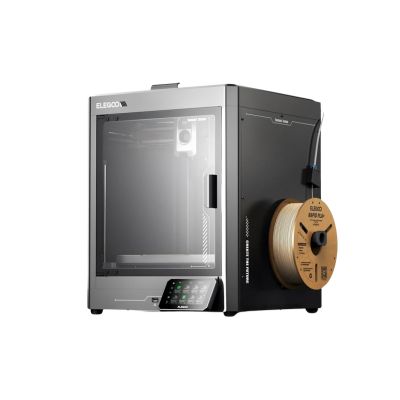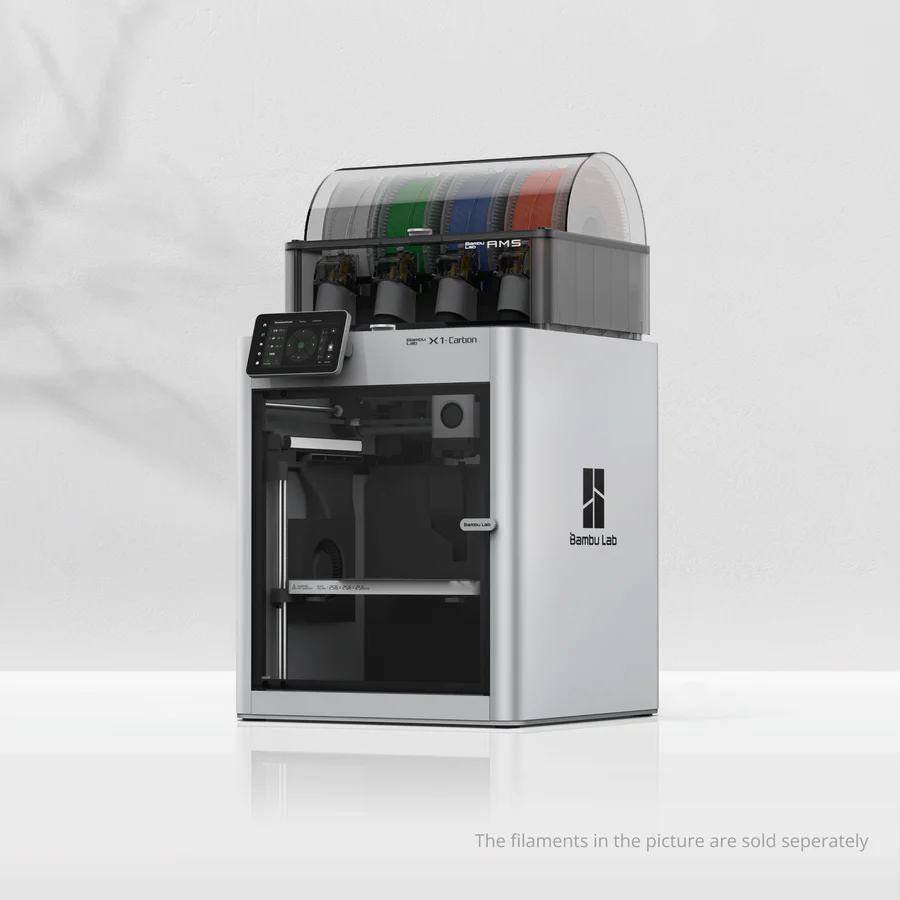Compare Centauri Carbon vs X1 carbon
Comparison between the best 3D printers
Choose the best 3D printer at the best price. The cheapest 3D printers are here.
Buy a 3D printer here with 3D Fila.
 |
 |
|
| Model | Centauri Carbon |
X1 carbon |
| Printing Material | Filament | Filament |
| Buy Filament for Elegoo Centauri Carbon | Buy Filament forBambu Lab X1 carbon | |
| Estimated price | $500,00 | $1449,00 |
| Manufacturer | Elegoo | Bambu Lab |
| Release Year | 2025 | 2023 |
| Print Volume [mm] | 256x256x256 | 256x256x256 |
| Printer Size [mm] | 500x500x600 | 389x389x457 |
| Weight [kg] | 17,5 | 14,13 |
| Power Loss Recovery | YES | YES |
| Enclosed printer | YES | YES |
| Bed Leveling | Automatic | Automatic |
| Filament End Sensor | YES | YES |
| Bed type | Heated | Heated |
| Power supply system | Direct Drive | Direct Drive |
| Standard nozzle | 0,4 | 0,4 |
| Maximum Nozzle Temperature [°C] | 300 | 300 |
| Maximum Bed Temperature [°C] | 110 | 120 |
| Maximum printing speed [mm/s] | 500 | 500 |
| Filament holder | YES | YES |
| Camera for supervision | YES | YES |
| Recommended filaments | PLA, PETG, ABS, ASA, TPU, NYLON, CARBON FIBER | PLA, PETG, TPU, PVA, PA, PA-CF, Nylon, PC |
| Recommended slicers | Elegoo Slicer, Orca Slicer | Bambu Studio, Super Slicer, Cura, Prusa Slicer, Orca |
| Maximum Resolution [mm] | 0,1 | 0,1 |
| Processor | Quad ARM A7 1.2 GHz | |
| Display | Touchscreen 4,3'' | Touchscreen 5'' |
| Power Supply | 350 W | 350 W |
| Connectivity | WiFi, SD, USB | Wifi, Bambu bus, Cartão SD |
| Operating systems | Windows, Linux e Macbook | Windows, Linux, Macbook |
| Date of registration in the system | 2025-02-10 | 2024-04-10 |
| Release date | 2025 | 2023 |
| Extra features | The Elegoo Centauri Carbon is a CoreXY 3D printer with an enclosed structure, direct drive extruder, and hardened steel components for abrasive materials. It features automatic bed leveling, a touchscreen, a filament cutting system, and an elongated nozzle designed to reduce clogs. It offers Wi-Fi connectivity for remote file transfer and runs on a Klipper-based firmware, providing advanced control and precise adjustments. | The Bambu Lab X1 Carbon revolutionizes 3D printing with stunning design, high print speeds, and a streamlined user experience. It stands out with its CoreXY system, a hotend capable of reaching 300°C, allowing for a wide range of filaments. Its LiDAR-assisted bed leveling system, vibration compensation, and AMS multicolor printing capability raise the industry standard. Print quality is impressive, with the ability to fine-tune for perfection. The X1 Carbon, with its closed build volume, not only promises but also delivers one of the most advanced 3D printing experiences available to consumers. |
| Support for multiple colors and materials (AMS and CFS) | NO | YES |
Notes * |
||
| Cost-benefit | 8 / 10 | 7 / 10 |
| Hardware | 6 / 10 | 6.4 / 10 |
| Tela | . | . |
| Print volume | 4 / 10 | 4 / 10 |
| Performance | 4 / 10 | 4 / 10 |
Conclusion |
| In conclusion, the Elegoo Centauri Carbon and the Bambu Lab X1 Carbon each present distinctive advantages suitable for different users and budgets. The Elegoo Centauri Carbon shines in affordability while providing a spacious print volume, automatic bed leveling, and robust filament compatibility, making it an excellent choice for hobbyists and newcomers in the 3D printing space. Its CoreXY design and notable features like a filament cutting system underscore a solid value proposition. With a decent cost-benefit ratio and reliability in printing various materials, it remains a commendable entry-level option. Conversely, the Bambu Lab X1 Carbon, despite its higher price tag, boasts a suite of advanced features designed for professional users seeking high-quality results and efficiency. Its quick print speeds, LiDAR-assisted bed leveling, and multicolor printing capabilities reflect an innovative approach to 3D printing. While its cost-effectiveness might be lower, the extensive range of functionalities and superior print quality offer significant advantages for those looking for cutting-edge technology and professional-grade performance. Ultimately, the choice between the two printers hinges on individual priorities—whether one values a budget-friendly option with solid features or seeks advanced capabilities backed by a higher investment. |

